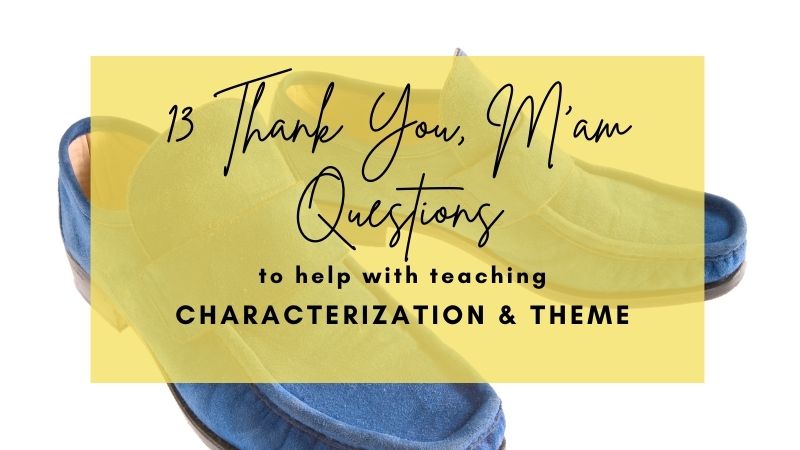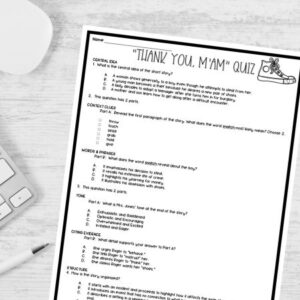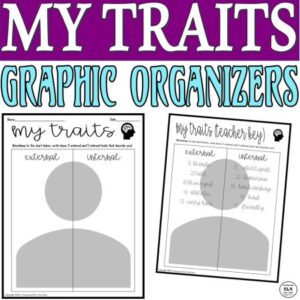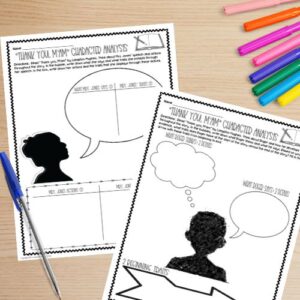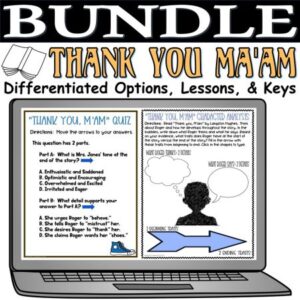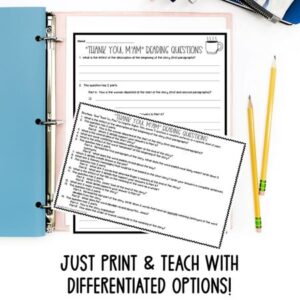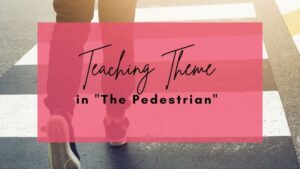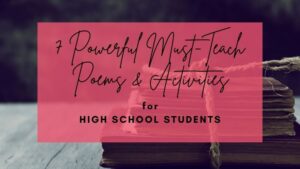Langston Hughes’ “Thank You M’am,” also known as “Thank You Ma’am,” should be on your list of MUST-TEACH short stories! It has so much to offer not only to teachers who love literature but also to middle AND high school students who want to read something fun and engaging! And adding in the BEST Thank You Ma’am Questions can help you with teaching this important piece of American Literature!
If you have never read it, here is a quick synopsis: A young teenage boy attempts to steal a purse from an older woman. Instead of turning him in, she takes him home, feeds him, and talks with him. At the end of the story, there is an unexpected twist, and the lady shows immense generosity to this boy. And one of the best things about this story is the message involving forgiveness, understanding, and mercy! Keep reading for help with teaching this short story as we focus on 13 Thank You Ma’am Questions To Get Students Thinking!

Need help with Test Prep? Check out this Langston Hughes’ “Thank You M’am,” to help students achieve success on standardized tests!
13 Thank You Ma’am Questions To Get Students Thinking!
Getting students to engage with what they read is the goal. Simply reading and moving on is NEVER the objective. We really want students to understand what they read, reflect on the meaning, and evaluate the effectiveness, value, or truth of a text. Unfortunately, for many of our students, the initial comprehension piece is missing. To even think about getting students to the reflection and evaluation part of reading seems a far distance away.
But students can do it! We just need to take them step-by-step through the process and provide Thank You Ma’am Questions. With continual practice, they will get there.
Click to buy this ready-made quiz pack with Thank You Ma’am Questions aligned to the Common Core Standards!
7 CHARACTERIZATION QUESTIONS
When it comes to characterization, students seem to struggle. They might see what a character does or says at a specific moment, but that may be all. The real question connects to meaning and purpose. Ex. How do a character’s actions, traits, or speech lead to meaning?
To get to the higher-level Thank You Ma’am Questions, we need to go step by step:
- Introduce the definition of “character traits.”
- Differentiate between internal and external traits.
- Identify what a character says or does.
- Determine what traits a character has based on the evidence.
- Analyze how a character changes or stays the same.
- Examine how the characterization contributes to the meaning or message of the story.
Traits: qualities of a person
- Internal Traits: the character traits of a person (intelligent, wise, determined, mature, etc.)
- External Traits: the physical characteristics of a person (tall, athletic, brown eyes, etc.)
For help with introducing characterization, check out this FREEBIE from my story Kristin Menke-Integrated ELA Test Prep!
Think about Mrs. Jones and Roger in the story.
- What are 3 internal traits of Roger or Mrs. Jones?
- What are 3 external traits of Roger or Mrs. Jones?
- How are Roger and Mrs. Jones alike, and how are they different?
- How are Mrs. Jones and Roger similar? What does this similarity reveal about each character?
- How are Mrs. Jones and Roger different? What does this difference reveal about each character?
- How does the characterization of Mrs. Jones support the theme of the story?
- How does the characterization of Roger support the theme of the story?
Do you want EASY-TO-TEACH characterization activities for Thank You, Ma’am? Click below!
Need another story to practice with? Check out 10 Critical Thinking Questions by Standard for The Gift of the Magi!
6 THEME AND CENTRAL IDEA QUESTIONS
Remember, the theme is the message, and you can easily review this concept through a variety of Thank You Ma’am Questions! The central idea is what the story is about. So when teaching these concepts, we need to differentiate between the two.
Let’s start with some Thank You Ma’am Questions about the writer. What is the author, Langston Hughes, trying to relay to his audience? If he is just trying to tell us a story about a lady who treated a teenage boy well by taking care of him and sending him off with money for shoes, we are missing the point. We might understand what the story is about (central idea), but we are missing the message (theme).
We are still reading what Hughes wrote decades after the initial publication, so there must be something for us to learn. So often, we skim over the message of a story, or our students might write down something relating to the topic, but they don’t really get to the heart of the story.
You can start off by asking Thank You Ma’am Questions about the central idea in several ways:
- What is the central idea of the short story “Thank You M’am” by Langston Hughes?
- What is the central idea of the first half of “Thank You M’am” by Langston Hughes?
- What is the central idea of the ____ paragraph of “Thank You M’am” by Langston Hughes?
***Be sure to add the following: “What evidence supports the central idea?”
After students understand what is going on, we can help our students to think critically by asking Thank You Ma’am Questions connecting to theme!
- What is the theme of the story “Thank You M’am” by Langston Hughes?
- How does the title contribute to the message of the story?
- How does the author develop the theme of the story?
Here are sample thematic statements that might or might not be true from the story:
- Be careful not to walk alone at night.
- Sometimes it is difficult to fathom someone’s kindness.
- Certain moments in life can change how you see someone.
- Individuals should share their money with those who need it.
- One should be cautious when trying to take things from people.
- Behaving differently from others may lead to negative outcomes.
If you want answers and explanations to help you guide your students, click here for a standards-based, test prep quiz!
Need some literature ideas for teaching theme? Check out “Short Stories For Teaching Theme: Put “The Pedestrian” On Your List!”
WHY SHOULD WE INCLUDE HIGHER-ORDER THANK YOU MA’AM QUESTIONS IN OUR LESSONS?
It might seem obvious. Students need to master the standards. Often, we just hope our students learn the basics, but I know students can get to the higher-level critical thinking questions IF we take students through the above process every time we read something.
They can start with Thank You Ma’am Questions for reading comprehension and then get to the questions that require more thought, more insight, and more skill.
Want to make teaching poetry a piece of cake? Check out 7 Powerful MUST-TEACH Activities & Poems For High School Students!
Check out more fun lessons and Thank You Ma’am Questions at my store Kristin Menke-Integrated ELA Test Prep!

